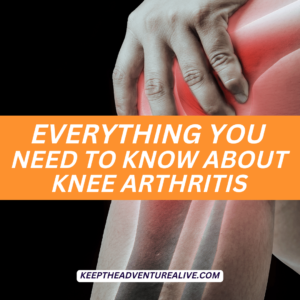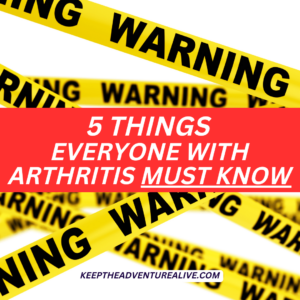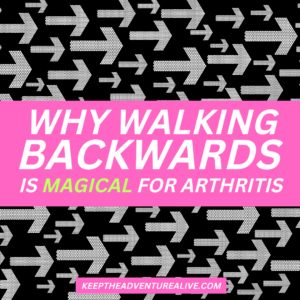Stiff joints are frustrating, especially if you are trying to be active but instead you find yourself having to hobble around. If you have osteoarthritis- stiff joints may be one of the most limiting symptoms you face. Whether it’s in the morning, after you’ve been sitting or standing for a while, or even after exercise. So what is the best way to combat joint stiffness? Let’s take a look.
Stiffness can creep up and can limit you from walking, climbing up/down stairs, and simply just moving around your house.
It is common with osteoarthritis to feel stiffness relief after about 15-30 minutes of doing some simple movements described in this scenario below:
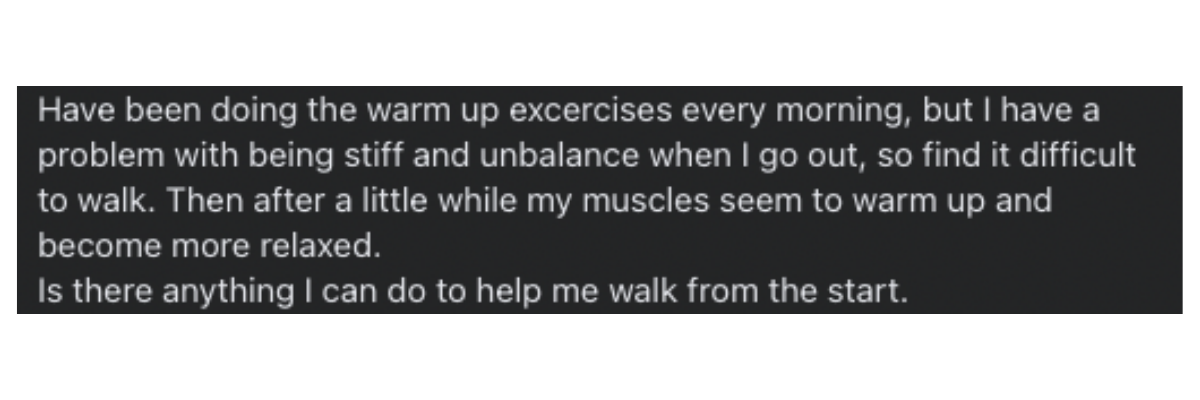
Do you feel like you have to hobble the first couple of steps and feel unsteady because of it?
In the morning, stiffness can be the worst.
But there are a few things you can do to combat stiffness and make it less severe.
As a physical therapist and osteoarthritis specialist, I had treated hundreds of people with osteoarthritis. I have seen stiff joints reduce to minor stiffness that is no longer limiting so it is possible!
It think it is vital to first understand why joint stiffness happens so the solutions can make more sense.
I have found that the more you understand, it makes it easier to follow through with certain interventions. Then, your stiff joints will be thanking you!
Why your joints get stiff
Joint stiffness occurs with osteoarthritis due to the changes that have occured to the joint space and cartilage.
I found one way that explains it really well and it is called the “gelling phenomenon“. I think this offers an awesome way to think about why stiff joints happen in the first place.
So what is the gelling phenomenon? It is described as a thickening of the fluid in the joint with prolonged immobilization.
Think about wax or butter. The more you heat it, stir it, and keep in moving- it remains more viscous. The longer it sits stagnant, the thicker it becomes.
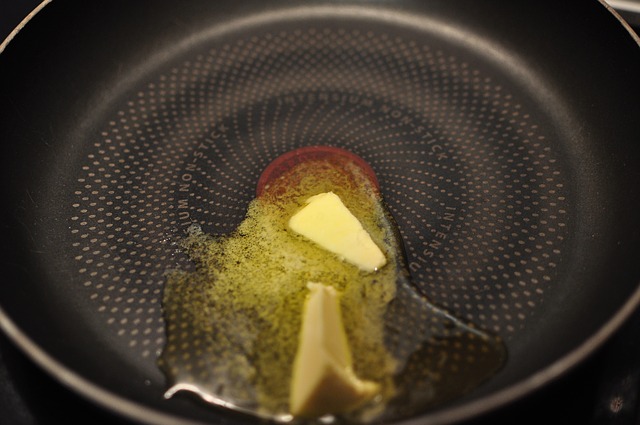
Think about your joint in the same regard. The longer you’re stagnant, the more friction your joints encounter when you try to get up and move. The fluid in between the joint becomes thicker.
This happens with increased levels of inflammation. Levels are higher in arthritic joints because of lifestyle factors as well as a very complicated pathophysiology of the condition itself.
The goal is to find ways to keep the fluid viscous- to keep it thin and mobile. The more mobile your joint fluid is, the easier movement will become. There are 3 main ways that you can do this. Learn more below.
3 simple tips to combat stiff joints
The stiffer your joints the harder movement becomes. In order to keep stiffness at bay, it is important to make sure you are moving and keeping inflammation levels down.
I have boiled it down to 3 simple steps to get started with to make it as approachable as possible. Small steps are key to finding success and making it last.
Most importantly, I’d like you to know what is possible when you have the right steps to follow:
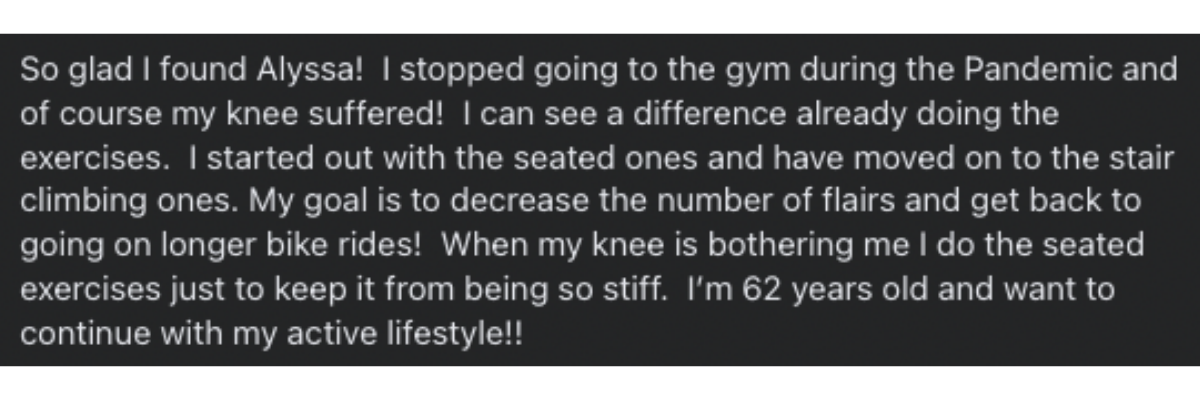
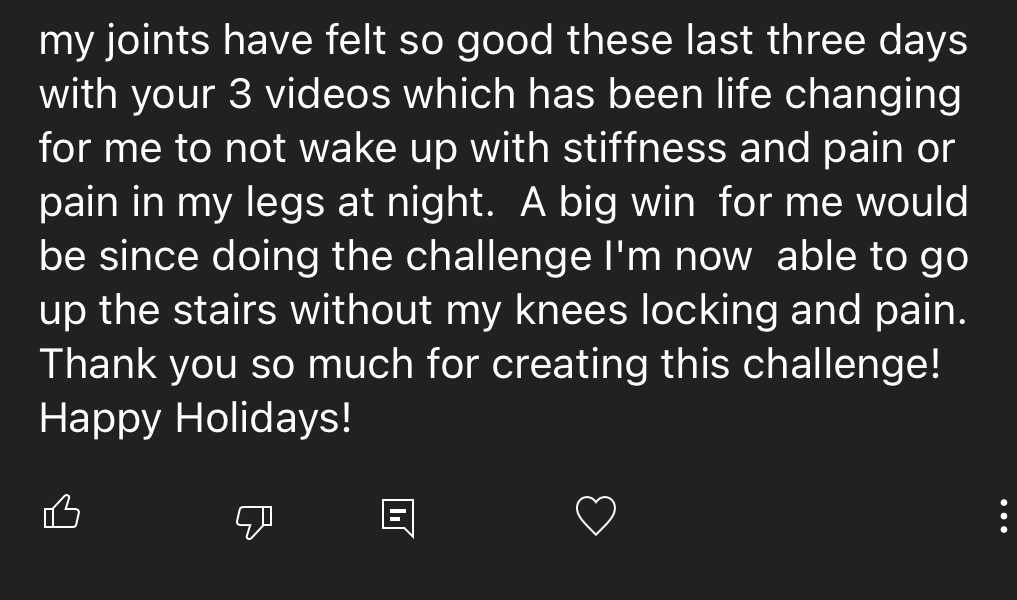
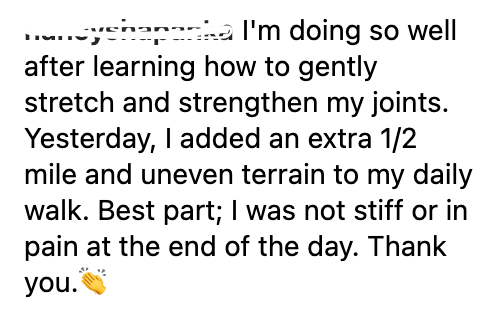

I want you to know before you read this that there is hope!
As a caveat, when looking for progress when it comes to stiff joints, think about it in terms of severity and frequency. Is your stiffness less severe and does it happen less frequently. This will help to show more progress than the terms of stiffness or no stiffness.
1. Gentle but frequent movement
In order to help your stiff joints, you have to move. Your joints thrive on movement. Here is more on the benefits of exercise for osteoarthritis.
When your joints become stiff, think about trying to warm up the wax or the butter we just talked about.
Many times stiff joints come on after sitting for a while, especially if you have to sit for work. The same can go for standing though too. If you are standing in one position for a longer period of time, you may also experience stiffness.
Gentle but frequent movement can really help to keep your joints lubricated, especially your knees, hips, and ankles. For example, if you are sitting, alternating positions that your legs are in from straight to bent can be really helpful.
I have a post that shows you simple movements you can easily do sitting in a chair that can help to combat stiffness that you can read here.
The goal is to complete movement every 10-15 minutes if possible. This could be as simple as kicking your leg out straight a few times.
If you set an alarm it can be really helpful to become more consistent.
I know movement isn’t always possible due to limited space like when on an airplane but there are ways to get creative in this post.
2. Walking around
Changing positions from sitting to standing and then from standing to walking can be crucial in helping to fend of stiff joints.
Completing the gentle movements from number 1 and then going for a short walk can be extremely effective. Think about adding in different movements though too. Let me explain.
If it is hard for you to step away for a short walk, simply standing at a desk or at a counter and sidestepping in place can be magical. Or even taking a few steps backwards can be really help.
If forward walking does irritate your joint(s) or cause pain, trying to add in movement in different ways can actually feel surprisingly good!
I have a full post here about how to add variety to an in home walking routine that could be very helpful in giving you ideas on how to move.
3. Controlling inflammation in other ways
The more inflammation your body accumulates, the more stiffness you will feel.
Inflammation comes from a variety of different things including foods, stress, poor sleep quality, inactivity, excess fat mass, and others. These are the ones that are primarily in your control.
Of course you also have history of previous injury and genetics that play a part as well but aren’t in your control.
One of the biggest things I recommend is to start with food as it can make a noticeable impact. It can be pretty overwhelming to know where to start though.
I have a post here to show you the best anti inflammatory foods to get started with. You can also watch this video below:
Another thing that can increase the thickness of the joint fluid and lead to more stiffness is dehydration. Hydration plays a significant role in reducing the severity and frequency of stiff joints.
One common question I get is if sparkling water counts towards hydration as well as regular water does. This article from UW Medicine is helpful in explaining what the research has found that, sparkling water can be just as hydrating as regular water.
If you are already incorporating a wide range of anti inflammatory foods and drinking enough water, it is possible your inflammation is stemming from another cause.
In order to find out what is driving up your inflammation levels as well as learning what you can do to reduce can be an overwhelming journey.
Inside of Adventurers for Life, I compiled the most common drivers of inflammation I have seen as well as helping you to develop an action plan to help you finally reduce pain and stiffness. This membership was created to support you with exercise, vital information and the ability to meet others who are going through osteoarthritis too through community events.
Learn more about the membership by clicking HERE.
Conclusion
Understanding why stiffness happens is the most important first step in figuring out the ways to combat it.
You now know that keeping the joint fluid as viscous as you can is extremely important. This can primarily be done through gentle but frequent movement, walking in place or going for a walk, and finding other ways to reduce inflammation.
Now, you have the first three steps to combat stiff joints. Without getting started on your journey, you will never know your true potential.
It’s time to get started on helping your joints feel good!

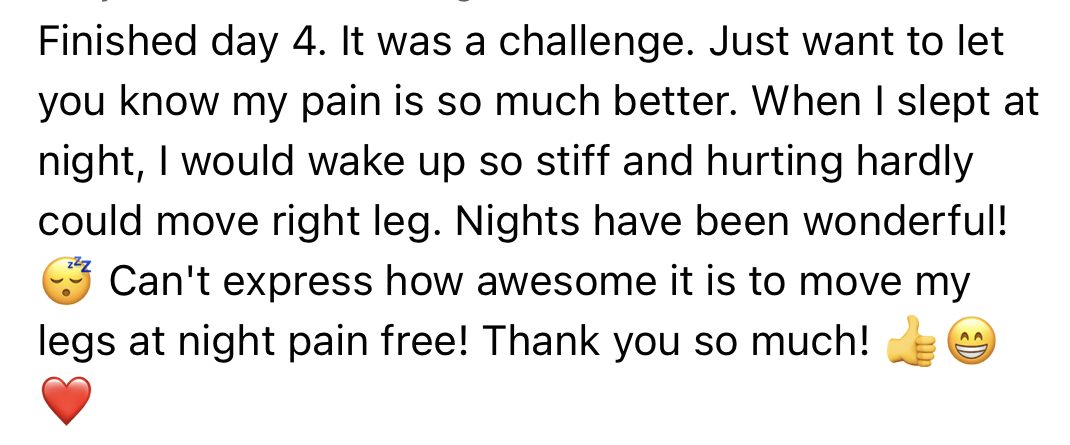
Take this as your sign that pain relief and stiffness relief are both possible. Let’s get started today. Join the FREE 4 Day Jumpstart your Arthritis Adventure Challenge so you can learn the best movements to build strength, combat stiff joints and to regain your active life.
Alyssa Kuhn

If you are looking to regain your active life but are unsure where to start, join the revolutionary membership, Adventurers for Life. This is a step-by-step path that not only will help you find pain relief but will help you unlock adventure. You’ll get workouts, tests to pass to make sure you are on the right track, community events and MORE.
Disclaimer: This post is for general informational purposes only. It should not be used to self-diagnose and it is not a substitute for a medical exam, cure, treatment, diagnosis, and prescription or recommendation. It does not create a doctor-patient relationship between Dr. Kuhn and you. You should not make any change in your health regimen or diet before first consulting a physician and obtaining a medical exam, diagnosis, and recommendation. Move Well Age Well, LLC and Dr. Alyssa Kuhn, PT, DPT are not liable or responsible for any advice, course of treatment, diagnosis or any conclusions drawn, services or product you obtain through this post, video or site.

